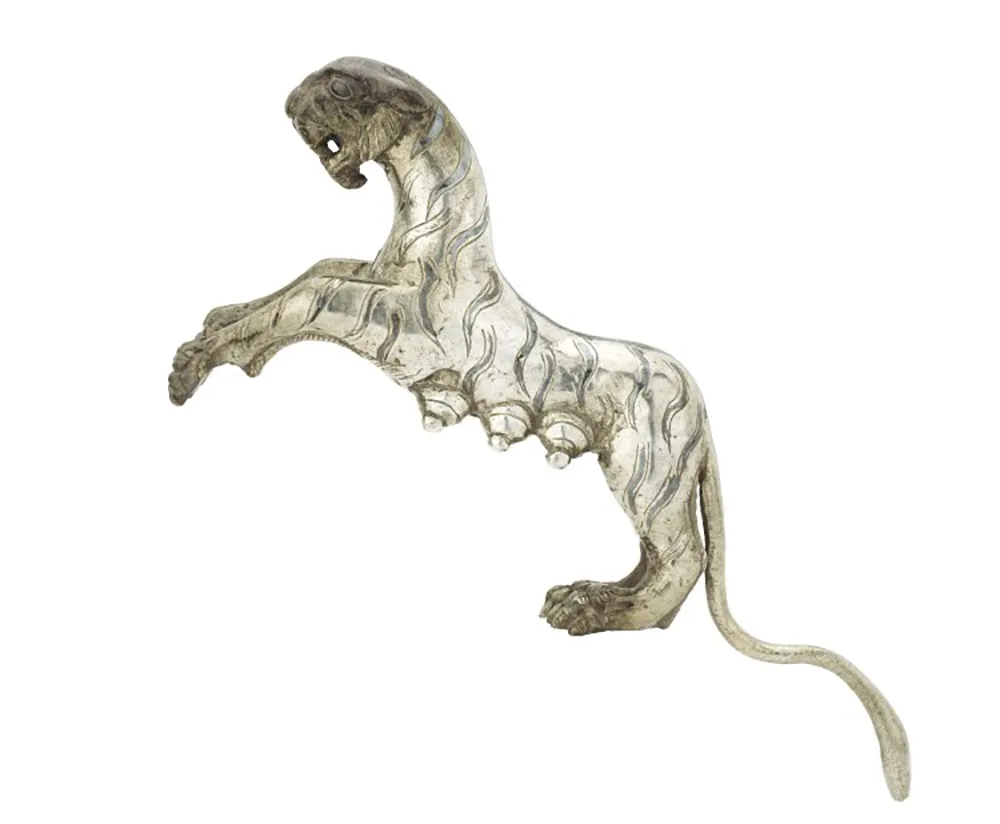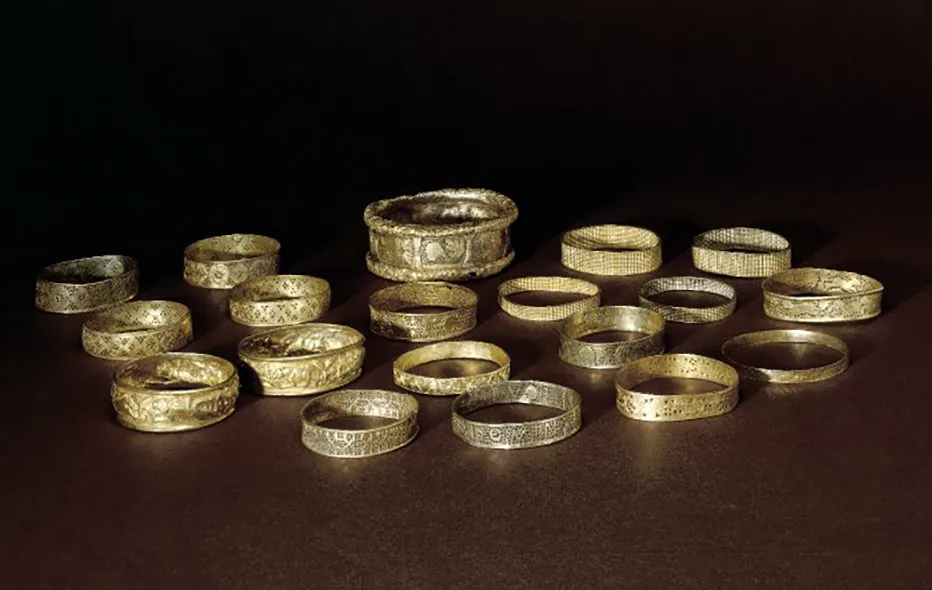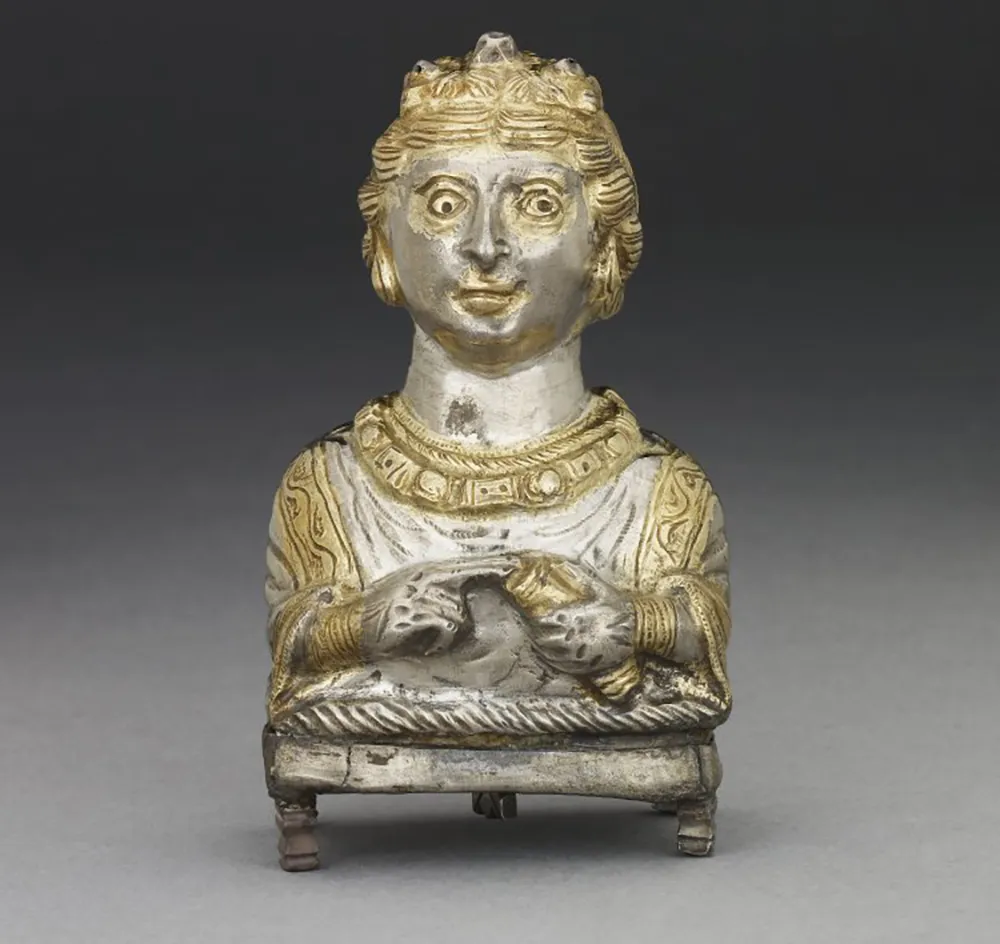Today, archaeologists are still debating just how old the hoard is—and what it tells us about the end of the Roman Empire in Britain
/https://tf-cmsv2-smithsonianmag-media.s3.amazonaws.com/filer/7b/43/7b43db7d-4bf1-41d6-84ab-1f1f351e8777/an00030515_001_l.jpg)
When Eric Lawes set off for a field in Hoxne village, Suffolk on November 16, 1992, it wasn’t on a treasure hunt. The metal detector he’d received as a retirement gift was meant to find a hammer lost on the farmland. But the detector picked up a strong signal in the earth, leading Lawes to start digging, and it quickly became apparent that he had indeed found treasure.
After bringing up only a few shovelfuls of silver spoons and gold coins, Lawes quickly retreated and called the police and the local archaeological society. The very next day, as covertly as possible, the archaeologists excavated a chunk of earth with the treasure still contained within. This way, they could remove the objects under laboratory conditions, which would help determine the age and storage method of the cache. By the time everything had been removed from the dirt, the archaeologists had nearly 60 pounds of gold and silver objects, including 15,234 Roman coins, dozens of silver spoons and 200 gold objects.
Lawes received £1.75 million from the British government for finding the gold and leaving it intact, which he split with the farmer on whose land the hoard was uncovered (he also eventually found the hammer, which later went on exhibit). As for archaeologists, they had their own reward: of the 40 treasure hoards discovered in Britain, the Hoxne Hoard was “the largest and latest ever found in Britain,” says Rachel Wilkinson. The project curator for Romano-British collections at the British Museum, where the artifacts reside, Wilkinson says the unique way this hoard was excavated, compared to how most are retrieved by farmers plowing their field, makes it invaluable.
In the 25 years since the unearthing of the Hoxne hoard, researchers have used the objects to learn more about one of Britain’s most turbulent periods: the island’s separation from the Roman Empire in 410 A.D.
*****

The end of the fourth century A.D. was an unsettled time for the Roman Empire. The territory stretched across the entirety of the Mediterranean world, including all of the land that would come to be Italy, Spain, Greece and France and large chunks of North Africa, Turkey and Britain. Under Emperor Theodosius, Christianity became the sole religion of the empire, while all other belief systems became illegal, a dramatic change after centuries of polytheism. And while parts of the Empire continued to thrive, the Western Roman Empire was deteriorating. Gothic warriors won battles and killed leaders like Emperor Valens, and in 410 the Visigoths (nomadic Germanic peoples) sacked Rome. Meanwhile, Roman subjects in Britain were left to fend for themselves against raiders from Scotland and Ireland, having lost the support of Roman soldiers even before the separation from the Empire.
“The years from the later fourth century to 450, the period including the British hoarding peak, witnessed numerous invasions into the [mainland Europe] Empire by Germanic and Hunnic groups often followed by largescale devastation and disruption,” writes Roman archaeologist Peter Guest, the author of The Late Roman Gold and Silver coins from the Hoxne Treasure.
This level of societal upheaval has led to the “hoards equal hordes” hypothesis. Basically, Romano-British citizens who no longer had the protection of the Roman Empire were so terrified of the raiding Saxons, Angles, Picts and others that they buried their most valuable belongings. According to an entry from 418 in the 9th-century text Anglo-Saxon Chronicle, “In this year the Romans collected all the treasures which were in Britain and hid some in the earth so that no one afterwards could find them, and some they took with them into Gaul.”
For all their fears of “barbarians,” the Romano-British weren’t only the only people in the Roman Empire to experience upheaval—yet nowhere else have hoards been discovered in as dense of numbers as in Britain. Could there be an alternate explanation for why some wealthy family buried so much gold in the ground?
Because no organic materials survived in the Hoxne hoard, radiocarbon can’t be used as a dating technique. Instead, archaeologists use the age of coins, which they arrive it by looking at inscriptions on the coin as well as the ruler depicted on its face.
“The date after which Hoxne must’ve been buried is 408 or 409 [based on the age of the coins] and the traditional model would suggest it was buried around about that point in time,” Guest said in an interview with Smithsonian.com. “My perspective is that actually we’ve been misdating these hoards. If you look at them a little more carefully, then they should be dated to the period after the separation of Britain from the Roman Empire.”

Guest argues that the coins may have been in circulation around Britain for decades after the Roman Empire removed its influence from the island. One bit of evidence he offers for this hypothesis is a practice called clipping. Of the more than 15,000 coins in the Hoxne cache, 98 percent are clipped—bits of their edges have been removed, reducing their size by as much as a third. Based on chemical analyses, Guest and others have found that the metal removed from those coins was used to make imitation Roman coins that remained in circulation for longer.
“The Roman Emperor wasn’t supplying Britain with new gold and silver coins, and in light of that, the population tried to get over this sudden cutoff in the supply of precious metals by making the existing supplies go further,” Guest said.
But part of the value of the Hoxne hoard is that it contains more than just a massive quantity of coins. In The Hoxne Late Roman Treasure: Gold Jewelry and Silver Plate, archaeologist Catherine Johns speculates that the Roman family to whom the treasure belonged kept them as sentimental objects.
This suggestion is possible thanks to an analysis of not just what was in the hoard, but also how it was hoarded. Surrounding the coins and gold objects were nails, hinges, locks, scraps of wood, bone and ivory. Some of the objects were packed with straw, while others were placed in smaller, leather-lined wood boxes. Some of the items revealed significant wear, such as the silver handle in the shape of a tiger that had been detached from its vase, and the damaged pepper pots. All these details imply the stash might have been buried with care rather than being hurriedly hidden. And they also offer archaeologists plenty of fodder for theories about life for a wealthy family at the turn of the fifth century.
Take the dozens of silver spoons, for example. Some of them are worn down and show evidence of being repaired. Others are marked with words, including names (Aurelius Ursicinus and Silvicola) and a Latin phrase (vivas in deo). And while most of the spoons are inscribed to be read from a right-handed position, one spoon looks as if it was made for a leftie.

Or look at the pepper pot, selected by the BBC as one of 100 objects to tell the story of the history of the world. The silver pot is molded in the shape of a noble woman, with holes in the base of the object for pepper to be shaken out. Not only does the pot tell us the owners engaged in international trade—pepper had to be shipped and purchased from India—but it also reveals details about women’s fashion. As Johns writes for the BBC, “The most striking aspect of the lady’s appearance is her intricate hairstyle. It would have required very long, thick hair and the attentions of a skilled hairdresser to create,” and included decorative pins arranged to look like a tiara.
Even the jewelry reveals tiny glimpses of what life may have looked like for women. There’s a gold body chain for an adolescent girl, several rings missing their gemstones, and multiple bracelets, including one with the inscription utere felix domina Iuliane—“use this and be happy, Lady Juliane.”
“Were Aurelius and Juliane the owners of the treasure, or perhaps their ancestors? We do not know,” writes Kenneth Lapatin in the Times Literary Supplement. “These people remain ciphers to us and, unlike their possessions, are largely irrecoverable.”
*****
Archaeology is a field that often requires making inferences. The Hoxne hoard offers tantalizing slivers of the past without enough detail to allow for definitive answers. Even something as simple as when the treasure was buried currently remains unknowable. “You can’t prove or disprove either of these two positions,” Guest said of the hypothesis that the treasure was buried at the end of the Roman Empire in Britain or in the years after the end. “The dating of material culture to produce our chronologies and the difficulty of that goes back a long way in archaeology.”
But even surrounded by unanswered questions, the Hoxne treasure is an irresistible collection that tells a dramatic story: the end of one empire, the earliest days of what would eventually become another empire. And whatever else it might provide archaeologists, it also provides the public with a happy ending—sometimes you find buried treasure when you least expect it.